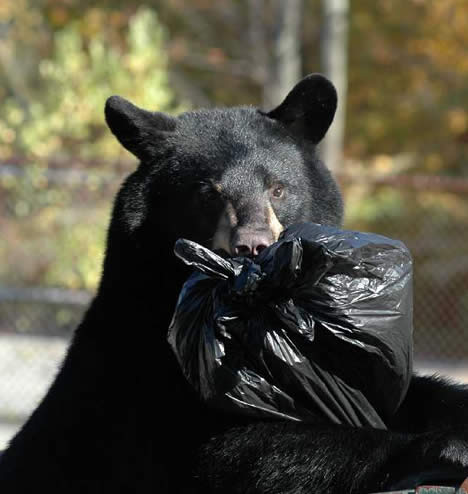
Bear Encounters/Safety Tips
Black bears by nature tend to be wary of people. However, if you encounter a black bear in your neighborhood or outdoors while hiking or camping, follow these common-sense safety tips.
DON’T
- Do not feed bears.
- Do not approach bears.
- Especially feeding bears, which will aggressively defend their food.
- Do not run from bears.
- Running may trigger a chase response.
- Do not make direct eye contact.
- Bears may perceive this as a challenge.
DO
- Remain calm and slowly back away.
- Make the bear aware of you.
- Be loud: speak in an assertive voice, yell, sing, or clap your hands. If available, bang pots and pans or use an airhorn.
- Make yourself look big.
- Wave your arms.
- Hold your jacket above your head.
- If you’re in a group, stay together and perform these actions together.
- Make sure the bear has an escape route.
- If a bear enters your home, prop all the doors open.
- If the bear doesn’t leave, move to a secure area.
- If your family lives in an area frequented by black bears, create a “Bear Plan” for children, with an escape route and planned use of whistles and air horns.
- Black bear attacks are extremely rare.
- If a black bear does attack, fight back! Aim for the snout and/or eyes.
- Use anything at hand: (knife, sticks, rocks, binoculars, backpack or kick the bear).
- Report black bear damage or nuisance behavior to the DEP’s 24-hour, toll-free hotline at 1-877-WARN DEP (1-877-927-6337).
REMEMBER
The bear may utter a series of huffs, make popping sounds by snapping its jaws and swat the ground. These are warning signs that you are too close. Slowly back away, avoid direct eye contact and do not run.
If a bear stands on its hind legs or moves closer, it may be trying to get a better view or detect scents in the air. It is usually not a threatening behavior.Black bears will sometimes “bluff charge” when cornered, threatened, or attempting to steal food. Stand your ground, avoid direct eye contact, then slowly back away and do not run.
Additional information can be found on: dep.nj.gov/njfw/bears/bear-facts-for-homeowners/





